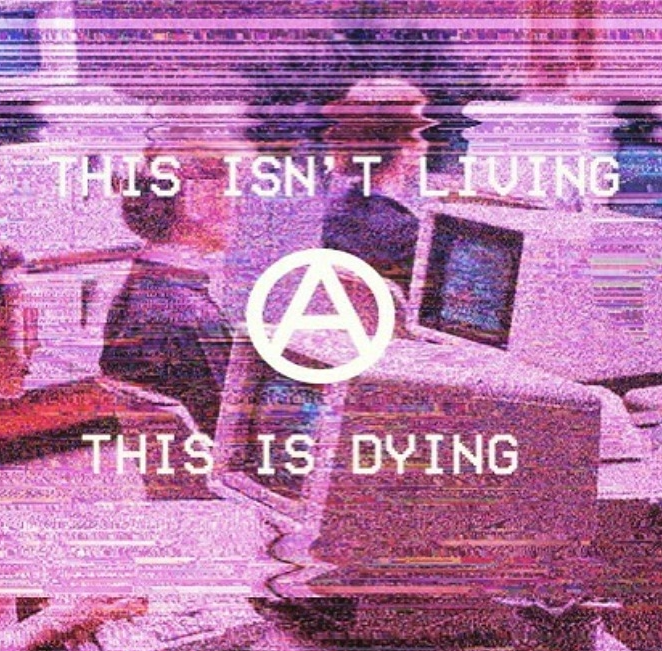Content Type
Profiles
Forums
Events
Everything posted by UCyborg
-
I just realized this thread has over million views!
-
GZDoom 4.1.2b is the last XP compatible version (archive page). The XP support was dropped at the same time when the developer switched to Visual Studio 2019 (announcement thread).
-

Last versions of software for Windows Vista and Windows Server 2008
UCyborg replied to WinClient5270's topic in Windows Vista
A word of caution to anyone running Vista on a VMware virtual machine - VMware Tools version 11.0.0 comes with an user mode OpenGL driver that expects K32EnumProcessModulesEx in kernel32.dll, which only exists on Windows 7+, thus one may unexpectedly get an error about the missing function when trying to run an OpenGL application, then application reporting it was unable to find an accelerated OpenGL driver or failing in some other way. The last compatible VMware Tools version is 10.3.10. This should be reported as it seems like an oversight rather than intentional breakage, plus the function is actually supported on Vista, just resides in a different DLL, so it would be trivial to fix.- 1,243 replies
-
4
-
- Server 2008
- software
-
(and 1 more)
Tagged with:
-
You're probably trying to download it with Internet Explorer or Edge, which are sensitive to incorrectly set MIME type on the server where the file is hosted. Try using another browser.
-

Is there a *real* fix for GUI blinking/flickering issues?
UCyborg replied to UCyborg's topic in Windows 10
That auto-colorization thingy appeared in Windows 8, so it's not exactly new, more like 7 years old! Knowing MS, they might fix it in the next 6 years and break something else at the same time. Are you sure it's not just aerohost.exe shutting down because its dwm.exe crash counter reached certain threshold? At least that's probably the case assuming that problem with DWM crashing with Aero Glass loaded when user session ends still exists in 1903. I've added another trigger for Aero Glass task in Task Scheduler that runs aerohost.exe on every login if it's not running yet. I haven't got to a desktop without glassy window frames since, though I see that aerohost.exe hasn't been running for as long as Windows has. -
I don't know, but I'm guessing the tools ISO goes to a hidden .vmware folder in your home folder. That box takes the path to an ISO file. There is some logic in VMware that automatically ejects VMware Tools ISO after installation. If you pick the option to reinstall VMware Tools from menu, that box'll refill and you'll be able to see where it's stored. You setup the folders you'd like to share in virtual machine settings on the Options tab in the Shared Folders section. From Windows 7, you can access those folders by opening Network in Explorer, where a computer named vmware-host appears. You'll find shared folders in there. Windows might prompt you to enable network discovery when you open Network if it's disabled to be able to see anything in there.
-
Sure, I've been using NoScript extension for several years. The place I work at develops time attendance and access control software. 99% of interactions with it are done via web interface, which is completely and utterly useless with JavaScript disabled. It doesn't even work with stock browser on Android 4.x due to missing JavaScript functionality. Can't login, can't view anything, can't set anything; you just get a broken site without a warning that JavaScript is required, so in practice, the experience is the same as with those sites that just show whiteness if JavaScript is disabled.
-

New Aero Glass Release 1.5.12 for Win10 v1903 (Many Thanks!)
UCyborg replied to JTB3's topic in Aero Glass For Windows 8+
That's not a PDB Downloader, that's some script written by someone else that expects Debugging Tools. -
Log says VMware Tools aren't actually installed (article with install instructions). Relevant log entry: 2019-10-12T09:27:37.136-05:00| vmx| I125: VMXVmdb_SetToolsVersionStatus: status value set to 'notAvailable', 'noTools', install impossible Are you sure you've triggered installation procedure? When you pick that option, installation ISO should be downloaded and mounted on the virtual CD drive and, provided you haven't disabled autoplay in Windows, you'll get a dialog with an option to run the setup program (otherwise, navigate to the setup program manually in Explorer). Then, it's just clicking next and rebooting at the end. Afterwards, the Display tab in dxdiag should look something like this:
-
https://tonsky.me/blog/disenchantment/
-
Seeing the screenshot of Summary page of OpenGL Extensions Viewer running inside virtual Windows 7 machine would be helpful, along with VMware's log file (vmware.log - should be inside the folder where virtual machine was created).
-

New Aero Glass Release 1.5.12 for Win10 v1903 (Many Thanks!)
UCyborg replied to JTB3's topic in Aero Glass For Windows 8+
With current version of Aero Glass, you'll always get a warning about unsupported Windows version because that build is not on the supported builds list. After you cancel it, it'll work as usual (including symbol downloads). -

My Browser Builds (Part 1)
UCyborg replied to roytam1's topic in Browsers working on Older NT-Family OSes
FUEL in Destroy the Web extension specifically is used only for managing its preferences and there's a specific call made to figure out if extension has been run for the first time. I don't know if there's a better way, but some other extensions I have just add a preference that say if extension has already been launched for the first time. Those things are easily done without FUEL. Though some issues not related to FUEL still remain (errors coming from animation code). I'll try to figure it out. The description of FailObsoleteShellAPIs shim that can be read using Compatibility Administartor (32-bit) says: Devs are not supposed to use APIs that are meant only for internal use by the OS or the accompanying applications. So Windows XP's image viewer is a bit special, because Microsoft, but normal applications shouldn't rely on those. Although there are at least some exceptions; there are entries in compatibility database that tell the OS to apply FailObsoleteShellAPIs to said exceptions. There could be more though that need it to run on newer systems. -
The ID appears in the popup window that displays after you login, which presents an option to copy it to the clipboard. It's also written to the log file (C:\AeroGlass\debug.log).
-
Using classic theme means you're explicitly disabling usage of visual styles. Also application in question must have directive in its manifest to use version 6.0 of ComCtl32.dll library, see this (already taken care of in μTorrent). It's not related to visual styles as it looks OK in Windows 7 with classic theme and also doesn't look correct with XP's default Luna theme. There's something off about combination of overriding user-set color for selected item and Windows XP I guess.
-
That's not an accurate description of what was actually changed. More accurate description would be "Only use whatever system-wide decoder you can find when user has explicitly selected Builtin-in FFMpeg Decoder". If you get an error with that option selected, you may find that after installing K-Lite Codec Pack, LAV Video Decoder will be used to decode HEVC encoded files. Whether the graphics hardware supports hardware decoding of the format is irrelevant.
-

My Browser Builds (Part 1)
UCyborg replied to roytam1's topic in Browsers working on Older NT-Family OSes
I simply think utility of Basilisk would be improved if it also supported FUEL. I have a suspicion that it's another feature that Mozilla recklessly purged. It did survive for several years. I understand that it might not be the best way to do extensions today, but it would come in handy for older ones. I wonder if it's the kind of thing that would be a burden to support in Basilisk of today. -

My Browser Builds (Part 1)
UCyborg replied to roytam1's topic in Browsers working on Older NT-Family OSes
FUEL is still supported in Firefox 46.0.1, so I don't see what Australis has to do with it. Just interested in opinions from both sides. I'm not holding my breath either way. This shows another issue; there is an unknown number of extensions in the classic add-ons archive that are marked as compatible with certain versions of Firefox with which in fact they are not. -

My Browser Builds (Part 1)
UCyborg replied to roytam1's topic in Browsers working on Older NT-Family OSes
Is there a wizard out there that could shed some light on why Destroy the Web doesn't work in Basilisk? It works in Pale Moon and it obviously worked in Firefox at some point. I don't know which version broke it though, it's been a while since I've last tried it. Edit: Last version of Firefox with which Destroy the Web still functions is 46.0.1. The only thing that sounds relevant in Firefox 47 changelog is the removal of FUEL (Firefox User Extension Library). Damn you, Mozilla... Would it take much to bring FUEL back? -

AeroGlass 1.5.12 broken on 18362.356
UCyborg replied to SkyyySi's topic in Aero Glass For Windows 8+
You must manually update debug symbols. See the following post: -
Mistro - This Life
-
I edited my post a while back (got some things wrong), forgot to mention it back then. Anyway, the registry changes are rather trivial. The same entries are added that would be added if you went disabling GameUX entries one-by-one with Compatibility Administrator. But something's wrong with Win7 compatible version of Compatibility Administrator and it puts the entries in the 32-bit part of the registry, where they're ignored. About the stubborn cache kept somewhere by the OS that tracks compatibility related settings and may be refreshed on the per-app basis if the settings don't take effect immediately (always the case except if the application has never been run before), there's this undocumented command line parameter taken by sdbinst utility, the one that is used for installing user-created compatibility databases: sdbinst -c Run this from administrative Command Prompt and you don't have to do the thing on Compatibility tab for every game in question (source - thanks to dippy dipper for pointing it out).
-
Recently learned Basilisk has WebAssembly support disabled by default, so that's good to know (javascript.options.wasm in about:config). AFAIK, they only disabled loading of that and userChrome.css in 69.0 by default to improve startup performance (toolkit.legacyUserProfileCustomizations.stylesheets in about:config).
-
False positive.

